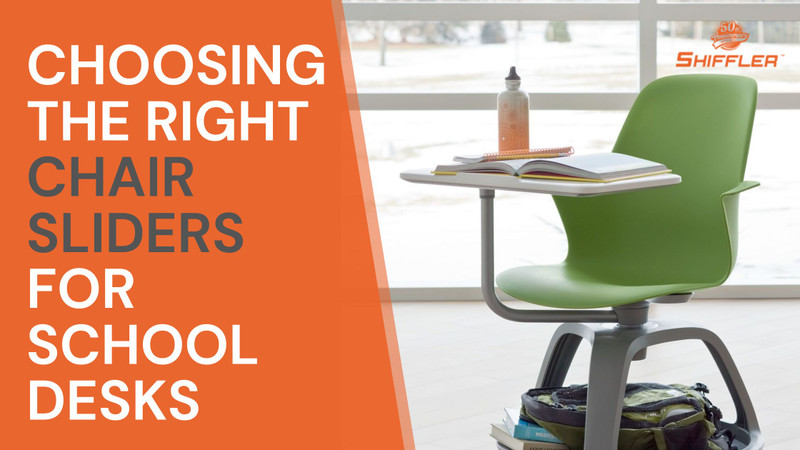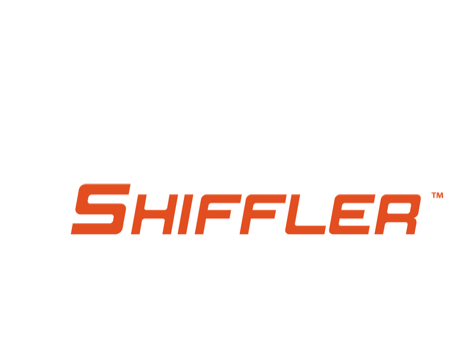Slide Right: Choosing the Right Chair Sliders for School Desks...
In education, it’s not just about curriculum and teaching methods;. Furniture and desk layouts play a big part in this. School desks are a classroom staple and mobility is key to a flexible and dynamic learning space. To achieve this, desk sliders (or chair glides) are a must. This guide goes into the world of desk sliders and how to choose the right ones for school desks.
Why Mobility Matters
Before we get into desk sliders, let’s talk about why mobility is so crucial in the classroom:.
- Flexibility in Classroom Layouts: Modern education philosophies require adaptable learning spaces. Being able to pivot desks easily supports different teaching styles, from solo work to group projects.
- Collaboration: Movable desks encourage collaboration between students, creating a sense of community and teamwork.
- Easy Cleaning: Schools are high traffic areas and need to be cleaned frequently. Easy to move desks make cleaning a breeze and meets hygiene standards with minimal effort.
- Accommodating Different Activities: Different activities require different desk layouts. For example, during exams a traditional row layout might be ideal, while during arts and crafts, a more open clustered space is preferred.
Desk sliders make moving furniture easier, which is key to a dynamic learning environment.
What are Desk Sliders?
Desk sliders (or glides or feet) are attachments fixed to the legs of desks (or chair legs) to make moving across different surfaces easy. They come in various materials, shapes, and mechanisms for different floor types and movement requirements.
What to Consider When Choosing Desk Sliders
When selecting the right desk sliders for a school environment, you need to consider several factors. These factors ensure the chosen sliders not only do their job of mobility but also enhance the overall classroom experience. Furniture glides including desk sliders also offer floor protection and easy movement.
1. Flooring Type: Hardwood Floors
The flooring in the classroom is a key consideration when choosing desk sliders.
- Hardwood Floors: For hardwood floors, felt pads are recommended. Felt pads are gentle on wood and won’t scratch and will move smoothly.
- Carpeted Floors: For carpeted areas, nylon or plastic sliders are best. They have low friction against the carpet fibers so desks can be moved easily.
- Vinyl or Tile Floors: Rubber sliders are best on tile or vinyl as they provide, a good balance of grip and mobility without damaging the surface.
2. Durability
School desks get heavy use, so the durability of the desk sliders is important. Premium materials with strong adhesive or secure attachment mechanisms are key to withstanding the daily grind of a school environment.
Durable desk sliders are also important for supporting heavy furniture in school environments.
3. Noise Reduction
To keep the classroom focused and quiet, noise reduction is a consideration. Some sliders are designed to reduce noise when desks are moved. Felt sliders, for example, are great at sound dampening so are perfect for quiet areas.
And chair leg covers can also help reduce noise and protect floors from damage.
4. Installation and Replacement
Don’t forget the practicality of installation and replacement! Some sliders are stuck onto the desk legs while others require tools or screws for attachment. In a school environment where maintenance staff will be replacing them, ease of installation is a big plus. Furniture pads are an easy install solution that can be replaced when needed.
5. Size and Shape Compatibility
Not all desks have the same leg shape or size and compatibility with different chair legs is key. Sliders come in various shapes and sizes to match the specific desk leg design. Make sure the sliders you choose are compatible with the desk dimensions and shape, whether round, square, or rectangle.
6. Cost
Budgets are a reality in educational institutions. While you need to choose high quality sliders, you also need to consider cost. Finding the ideal balance between quality and cost will help you make an economical choice that doesn’t compromise on functionality. Furniture sliders are a cost-effective solution for floor protection and mobility.
7. Health and School Safety
Student safety is number one! Make sure the materials used in the desk sliders are non-safe for school environments and non-toxic. Sliders should also be secure to prevent accidents or injuries from desk movement. Nontoxic and secure desk sliders are overall school safety.
Types of Desk Sliders and Chair Glides
1. Felt Sliders
Features:
- Soft on hard floors
- Good noise reduction
Pros:
- Reduces noise
- Protects hardwood floors from scratches
- Protects floors and furniture legs from damage
Cons:
- Wear out quickly on rough surfaces like tile or vinyl
- Attract dust and debris
2. Plastic Sliders
Features:
- Versatile and durable
- Suitable for all floor types
Pros:
- Long lasting and durable
- Generally cost effective
- Move furniture across all floor types
Cons:
- Noisy on hard floors
- Scratches sensitive surfaces
3. Nylon Sliders
Features:
- Strong and tough
- Smooth movement
Pros:
- Low friction for carpeted floors
- Highly durable
- Suitable for all types of chairs, smooth movement and durability.
Cons:
- Slippery on some surfaces
- Less noise reduction
4. Rubber Sliders
Features:
- Good grip
- Soft on most floors
Pros:
- Balanced grip and mobility
- Protects floors
- Rubber sliders as a type of furniture glides provide balanced grip and mobility and protect floors.
Cons:
- Leaves marks on some surfaces
- Wears out faster with heavy use
5. Screw-on Sliders
Features:
- Secure attachment
- Various material options (felt, plastic, etc.)
Pros:
- Very secure, won’t fall off
- Available in different material types
- Similar to chair leg covers, screw-on sliders provide secure attachment and protect floors.
Cons:
- Requires tools and time to install
- May damage the desk leg permanently
How to Install Desk Sliders
Proper installation of desk sliders on furniture legs is important for their effectiveness and longevity. Here’s a step-by-step guide to installing standard adhesive or screw-on sliders:
Adhesive Sliders
- Clean the Desk Legs and Chair Legs: Make sure the bottom of the desk legs and chair legs are clean and free from dust and debris. Use a damp cloth to wipe them down and let them dry completely.
- Measure and Cut (if necessary): If the sliders are not pre-cut, measure the size of the desk leg and cut the slider to fit.
- Peel and Stick: Remove the adhesive backing from the slider and press it firmly onto the bottom of the desk leg. Hold it in place for a few seconds to ensure a good bond.
- Test the Movement: After installation, test the desk for smooth movement. Make sure the sliders are secured and won’t come off easily.
Screw-on Sliders
- Gather Tools: Make sure you have the required tools, usually a screwdriver and possibly a drill if the desk legs are very hard.
- Position the Slider: Place the slider at the bottom of the furniture legs, align the pre-drilled holes, if available.
- Screw it in: Using the screwdriver, screw the screws through the slider into the desk leg. Don’t over tighten the screws as it may damage both the desk leg and the slider.
- Check Security: Make sure all screws are tightened and the slider is in place.
Care of Desk Sliders
After installation, maintaining desk sliders ensures their longevity and performance. Regular check up on the sliders and chair legs ensures their durability and efficiency. Here are some care tips:
- Regular Inspection: Check the sliders for wear and tear. Replace those that are damaged or no longer effective.
- Cleaning: Keep the sliders and the surrounding floor area clean. For felt sliders, remove debris and dust to ensure smooth movement.
- Reattach: For adhesive sliders, if they start to peel off, reattach them or replace them to prevent damage to the desk legs or floors.
Case Studies: Real Life Examples
Seeing the practical benefits of choosing the right desk sliders can be seen in real life examples. Desk sliders make moving furniture easier, classroom flexibility and management.
School A: Flexibility and Classroom Management
School A used felt sliders for their wooden desks on a hardwood floor. The result:
- Noise reduction during re-arrangements
- Protection of their expensive hardwood floors from scratches
- Easy desk movement, flexibility, and management of the classroom
- Protection of floors from scratches and damage
School B: Carpeted Solution
School B with a carpeted floor chose nylon sliders which:
- Provided smooth and easy movement on carpet. These nylon sliders are a type of furniture glides that provides easy and smooth movement on carpet.
- Reduced the burden on maintenance staff with high durability
- Proved to be cost effective due to its long-lasting nature
Conclusion: Choose Wisely
Choosing the right sliders for school desks is a complex decision. It involves understanding the school environment and considering factors such as flooring type, durability, noise reduction, and cost effectiveness.
Through wise decisions, schools can make their desks slide right and support every student’s learning journey. Therefore, furniture pads are a solution for floor protection and mobility in school.






